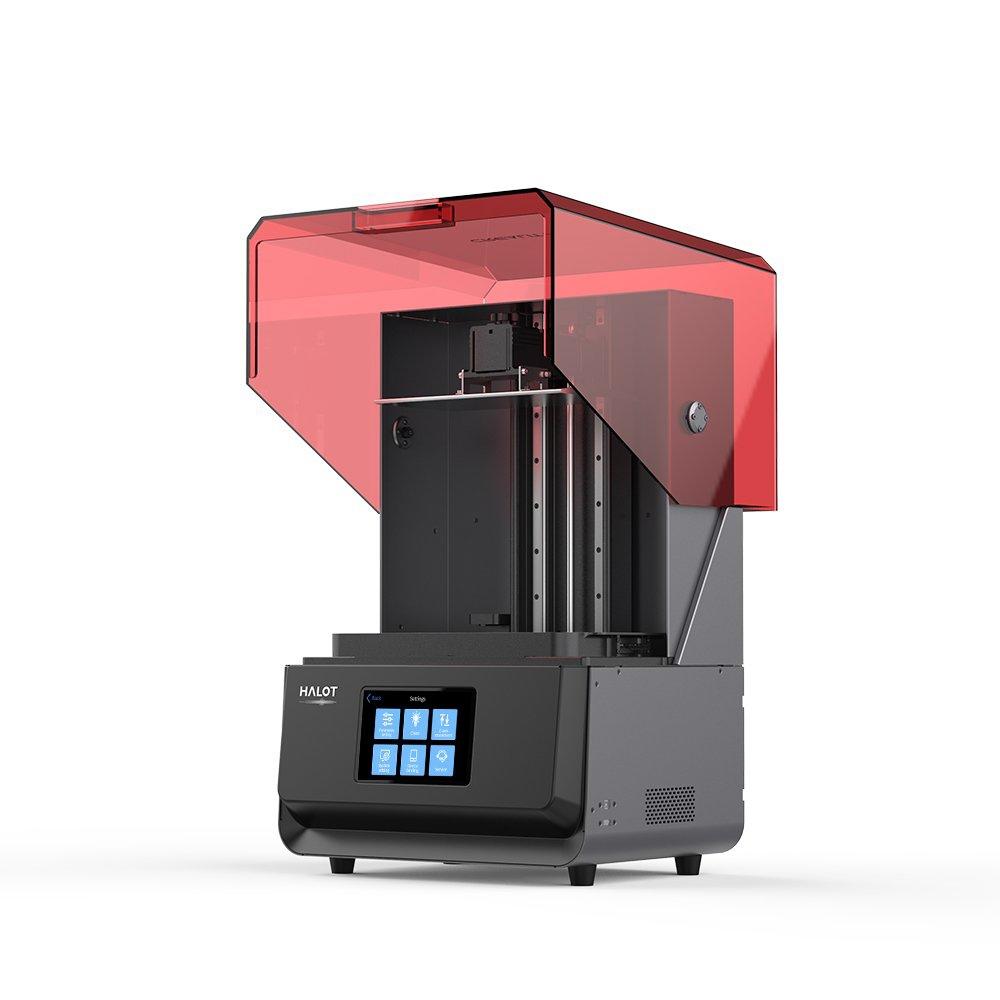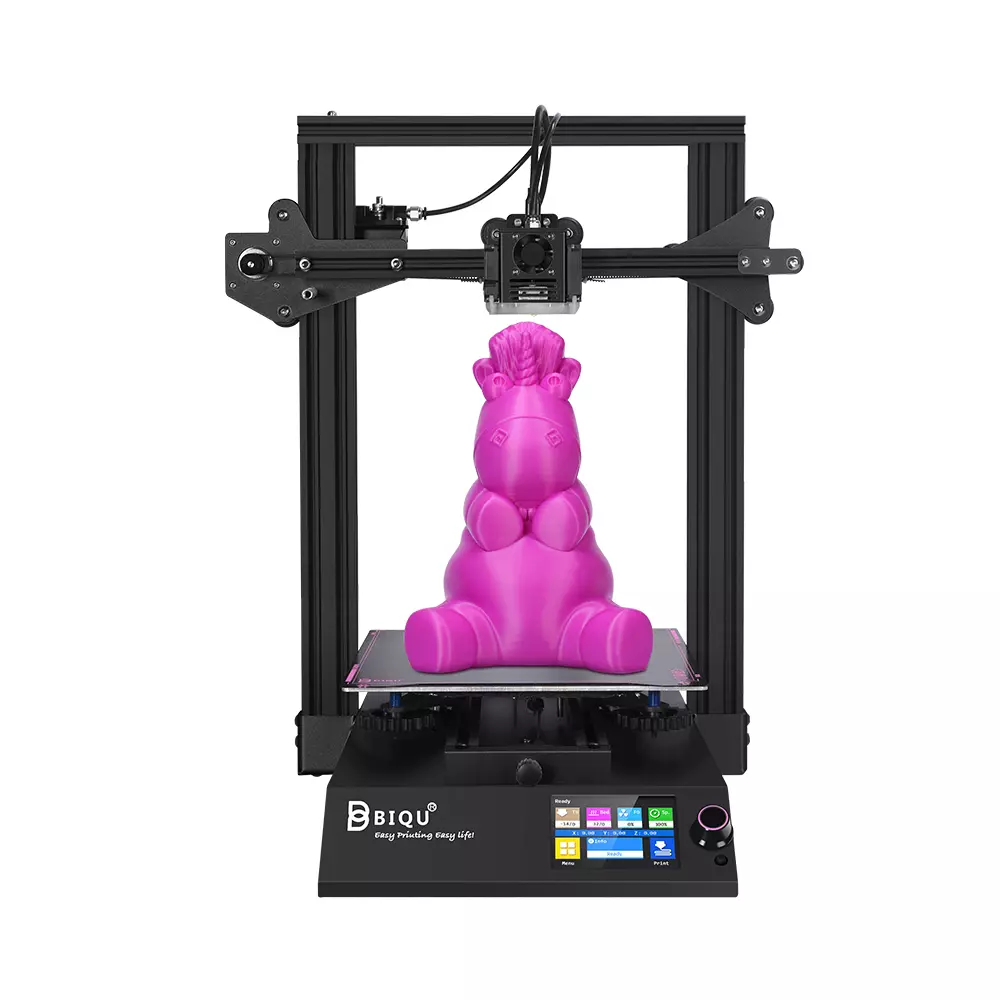Compare Halot Max vs BIQU B1
Comparison between the best 3D printers
Choose the best 3D printer at the best price. The cheapest 3D printers are here.
Buy a 3D printer here with 3D Fila.
 |
 |
|
| Model | Halot Max[BUY Halot Max] |
BIQU B1 |
| Printing Material | Resin | Filament |
| Buy Resin for Creality 3D Halot Max | Buy Filament forBigTreeTech BIQU B1 | |
| Estimated price | $3000,00 | $269,00 |
| Manufacturer | Creality 3D | BigTreeTech |
| Release Year | 2021 | 2020 |
| Print Volume [mm] | 293x165x300 | 235x235x270 |
| Printer Size [mm] | 480x387x770 | 412x402x492 |
| Weight [kg] | 32,5 | 8,00 |
| Power Loss Recovery | NO | YES |
| Maximum Resolution [mm] | 0,03 | 0,1 |
| Processor | 32 Bits BTT SKR V 1.4 | |
| Display | Display touchscreen 5'' | Touchscreen TFT 3,5'' |
| Power Supply | 24V / 360W | |
| Connectivity | SD / USB / Wi-Fi | SD / USB |
| Operating systems | Windows, Mac, Linux | Windows, Mac, Linux |
| Date of registration in the system | 2022-11-04 | 2021-04-14 |
| Release date | 2021 | 2020 |
| Extra features | The Halot Max printer stands out for its large print size (293 x 165 x 300 mm) and uses SLA technology. It has an integral light source for improved accuracy and a strong core with an advanced operating system. Its Z-axis module ensures high precision, supported by efficient slicing software. The machine offers online OTA updates and boasts an adjustable layer thickness between 10 and 200 microns. Its XY-axis resolution is 3840*2160, with 0.05 mm accuracy, and an integral 405nm light source. The printer includes a 5" touchscreen and multiple connectivity options, such as USB, Creality Cloud, and HALOT BOX WiFi. With cutting-edge technology, the Halot Max is ideal for printing small models with uniform precision, thanks to its self-developed lighting system and stable printing mechanism, which includes dual linear guides, ball screws, and an intelligent brake system. | The BIQU B1 is an advanced 3D printer with a silent 32-bit BTT SKR V1.4 motherboard and ARM Cortex-M3 CPU, offering DIY interfaces (I2C, SPI, WiFi) and dual Z-axis. Its dual BTT B1 TFT35 V3.0 operating system allows real-time monitoring and multiple printing modes, including G-code visualization effects. It stands out for its BIQU SSS (Super Spring Steel), ensuring easy model adhesion and simplified removal, with the possibility of using it on both sides. It includes a filament sensor, automatically pausing printing in case of filament breakage. The multicolored RGB lights integrated into the hotend allow you to view the printing status even at night. Additional notes include the need for a BIQU-specific Type-C cable and extra interfaces for smart filament sensor and BL Touch. |
| Support for multiple colors and materials (AMS and CFS) | NO | NO |
Notes * |
||
| Cost-benefit | 5 / 10 | 6 / 10 |
| Hardware | 1.2 / 10 | 2 / 10 |
| Tela | . | . |
| Print volume | 3 / 10 | 3 / 10 |
| Performance | 9 / 10 | 0 / 10 |
| [BUY Halot Max] |
Conclusion |
| In comparing the Halot Max and the BIQU B1 3D printers, several key factors differentiate these two models, including price, print technology, capabilities, and user experience. The Halot Max, while commanding a higher price point, offers advanced features geared towards precision and quality, such as SLA technology and a maximum resolution of 0.03 mm. Its larger print volume and integral light source enhance its ability to produce highly detailed models, making it an excellent choice for users who require top-tier output and are willing to invest accordingly. Features like power loss recovery and an advanced operating system further underscore its performance in a professional or serious hobbyist setting. However, its higher cost may not be justified for all users, particularly those with less intensive printing needs. In contrast, the BIQU B1 stands out for its affordability and practicality, appealing to beginners and those seeking a reliable printer without a hefty investment. Despite having a lower maximum resolution and less advanced technology, it offers features such as a dual Z-axis for improved stability and a silent motherboard for quieter operation. The inclusion of a filament sensor and easy model removal with its Super Spring Steel build plate enhances user experience, making it an attractive option for hands-on users and those who enjoy DIY projects. Ultimately, the choice between these two models will depend on individual priorities. For those prioritizing sheer performance and detail in their prints, the Halot Max represents a leading option, albeit at a premium cost. On the other hand, the BIQU B1 provides excellent value and functionality for users who are budget-conscious or just starting their 3D printing journey, making it a well-rounded choice for a broader audience. |

